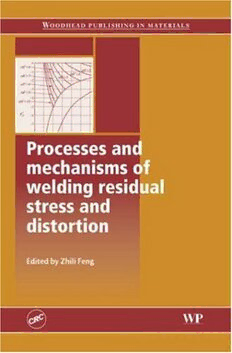
Processes and Mechanisms of Welding Residual Stress and Distortion PDF
353 Pages·2005·12.889 MB·English
Most books are stored in the elastic cloud where traffic is expensive. For this reason, we have a limit on daily download.
Preview Processes and Mechanisms of Welding Residual Stress and Distortion
Description:
As a fabrication technology, welding presents a number of technical challenges to the designer, manufacturer, and end-user of the welded structures. Both weld residual stress and distortion can significantly impair the performance and reliability of the welded structures. They must be properly dealt with during design, fabrication, and in-service use of the welded structures. There have been many significant and exciting developments on the subject in the past ten to fifteen years. Measurement techniques have been improved significantly. More importantly, the development of computational welding mechanics methods has been phenomenal. The progresses in the last decade or so have not only greatly expanded our fundamental understanding of the processes and mechanisms of residual stress and distortion during welding, but also have provided powerful tools to quantitatively determine the detailed residual stress and distortion information for a given welded structure. New techniques for effective residual stress and distortion mitigations and controls have also been applied in different industry sectors. Processes and Mechanisms of Welding Residual Stress and Distortion provides a comprehensive summary on the developments in the subject. It outlines theoretical treatments on heat transfer, solid mechanics and materials behavior that are essential for understanding and determining the welding residual stress and distortion. The approaches for computational methods and analysis methodology are described so that non specialists can follow them. There are chapters devoted to the discussion of various techniques for control and mitigation of residual stress and distortion, and residual stress and distortion results for various typical welded structures are provided. The second half of the book looks at case studies and practical solutions and provides insights into the techniques, challenges, limitations and future trends of each application. This book will not only be useful for advanced analysis of the subject, but also provide sufficient examples and practical solutions for welding engineers. With a panel of leading experts this authoritative book will be a valuable resource for welding engineers and designers as well as academics working in the fields of structural and mechanical engineering.
See more
The list of books you might like
Most books are stored in the elastic cloud where traffic is expensive. For this reason, we have a limit on daily download.
